Bellamy’s Organic. Confused about when to have your first baby? What’s the formula?
According to an article in the Harvard Business Review, having babies is even more costly that you might think. Prospective ...
Read MoreImportant notice to customers — product packaging changesLearn More
NEW FOOD PACKAGING IN STORE NOW
From August 2018, customers will notice our rebranded food packaging start to appear on shelf in all major stockists.
 CURRENT Packaging
CURRENT Packaging

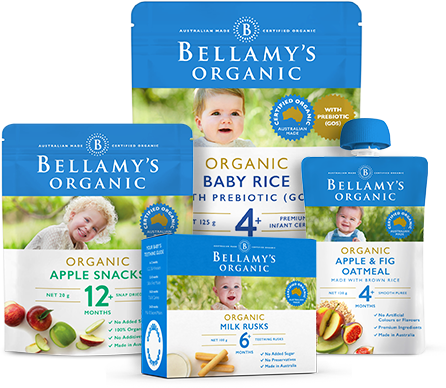 new Packaging
new Packaging
We are excited to announce our new packaging will start to appear on shelf from August 2018. This transition to new packaging will occur over a number of months. During this time there will be a mix of current and new packaging on shelf.
There are no major changes to these products, in some instances there is a small name change or slight recipe improvement, see below for the full details.
Products purchased via the website will be delivered to customers in our old packaging until the end of October. From November, products ordered from the website will be delivered in the new packaging.
Please note, our Infant Formula packaging will not be rebranded until later in 2019.
For any questions, connect with our team of accredited practising Dietitians on +61 3 6332 9200
Product name changes
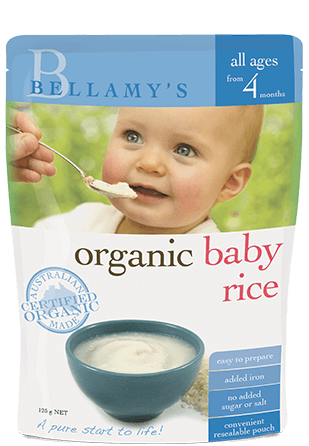 CURRENT Packaging
Organic Baby Rice
CURRENT Packaging
Organic Baby Rice

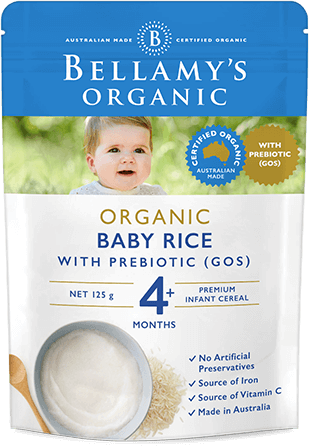 NEW Packaging
Organic Rice with Prebiotic (GOS)
Note: Our Baby Rice recipe has been upgraded to now include GOS Prebiotic
NEW Packaging
Organic Rice with Prebiotic (GOS)
Note: Our Baby Rice recipe has been upgraded to now include GOS Prebiotic
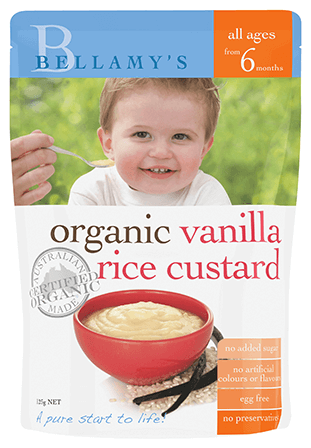 CURRENT Packaging
Organic Vanilla Rice Custard
CURRENT Packaging
Organic Vanilla Rice Custard

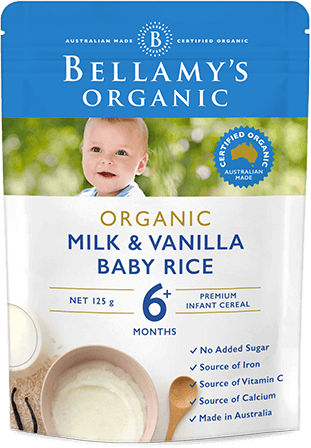 NEW Packaging
Organic Milk & Vanilla Baby Rice
NEW Packaging
Organic Milk & Vanilla Baby Rice
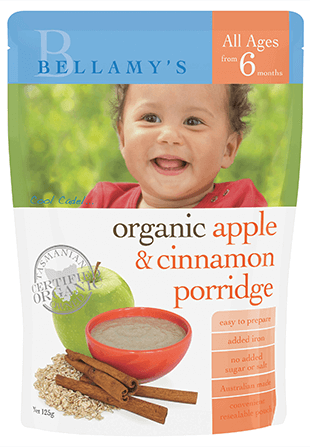 CURRENT Packaging
Organic Apple & Cinnamon Porridge
CURRENT Packaging
Organic Apple & Cinnamon Porridge

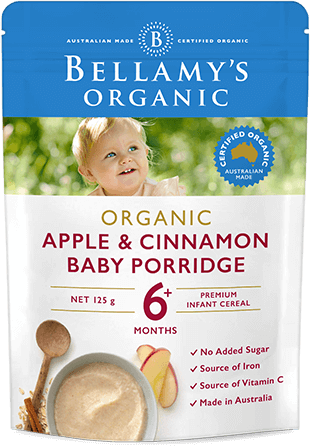 NEW Packaging
Organic Apple & Cinnamon Baby Porridge
NEW Packaging
Organic Apple & Cinnamon Baby Porridge
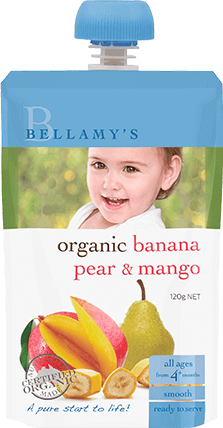 CURRENT Packaging
Organic Banana, Pear & Mango
CURRENT Packaging
Organic Banana, Pear & Mango

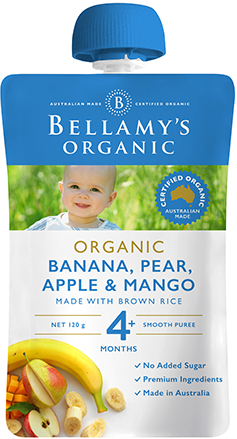 New Packaging
Organic Banana, Pear, Apple & Mango
New Packaging
Organic Banana, Pear, Apple & Mango
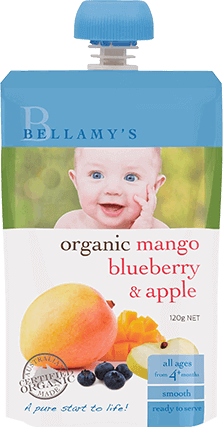 CURRENT Packaging
Organic Mango, Blueberry & Apple
CURRENT Packaging
Organic Mango, Blueberry & Apple

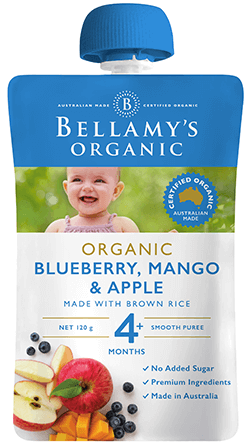 New Packaging
Organic Blueberry, Mango & Apple
New Packaging
Organic Blueberry, Mango & Apple
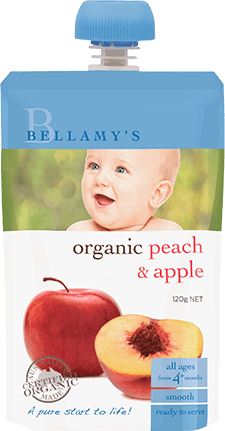 CURRENT Packaging
Organic Peach & Apple
CURRENT Packaging
Organic Peach & Apple

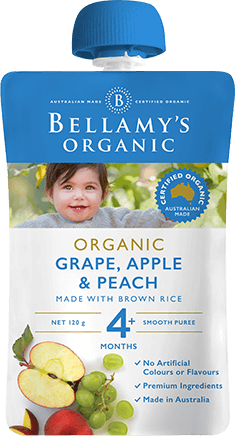 New Packaging
Organic Grape, Apple & Peach
New Packaging
Organic Grape, Apple & Peach
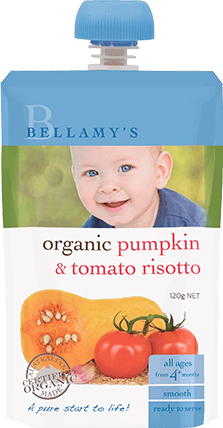 CURRENT Packaging
Organic Pumpkin & Tomato Risotto
CURRENT Packaging
Organic Pumpkin & Tomato Risotto

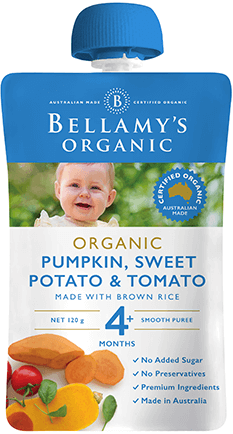 New Packaging
Organic Pumpkin, Sweet Potato & Tomato
New Packaging
Organic Pumpkin, Sweet Potato & Tomato
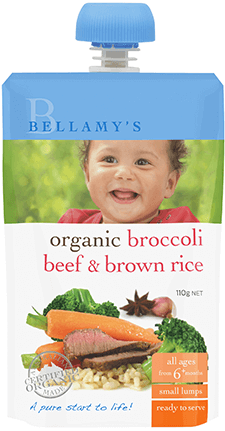 CURRENT Packaging
Organic Broccoli, Beef & Brown Rice
CURRENT Packaging
Organic Broccoli, Beef & Brown Rice

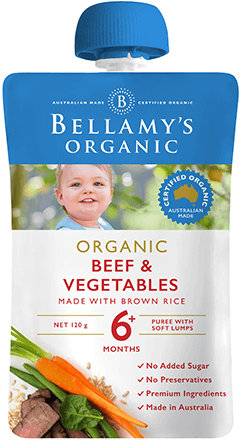 New Packaging
Organic Beef & Vegetables
New Packaging
Organic Beef & Vegetables
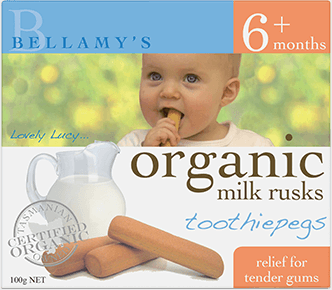 CURRENT Packaging
Organic Milk Rusks Toothiepegs
CURRENT Packaging
Organic Milk Rusks Toothiepegs

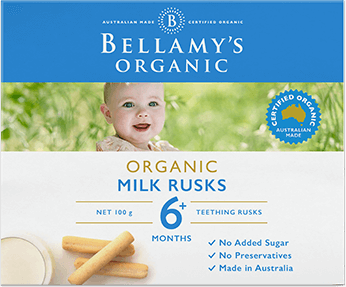 New Packaging
Organic Milk Rusks
New Packaging
Organic Milk Rusks
Weaning is a major milestone for babies – it means that their digestive system is ready to take on solids, and it also represents a time when they are curious enough to be intrigued by what their parents are bringing into their mouths. The minimum age to safely start introducing solids is six months old, and even though the baby’s system may be ready, the weaning process should be taken slowly and step by step. This is especially true when choosing which foods to feed your little one, as not all solids are recommended for tiny babies. Keep reading if you want to know which foods are the best for weaning.
Weaning is all about getting babies accustomed to solid food. Even though this should start when babies are at least six months of age, it is a process after all, and it can’t be rushed. The most important thing is that you identify when your own little one is ready to take on solids. It’s not always the same for everyone.
It is also important to note that weaning doesn’t mean breastmilk or formula are to be replaced immediately by solids. It’s all about balancing out the process, as babies still will get most of their necessary nutrients from milk. At six months of age, it’s all about getting them interested in food – but it will take some time before your child can thrive on solid food. At around nine months of age, most babies will be ready to start feeding near exclusively on solids.
Here are three main things to keep in mind when you begin the process of weaning:
Baby-led weaning is a method of weaning that involves giving them soft solids or finger food rather than starting them on purees and soups, as it was mainly done in the past. This weaning method became popular in the UK about ten years ago, and since then, more and more parents have opted for this method.
Some of the benefits behind baby-led weaning are how it improves a baby’s fine motor skill development, helps to establish an early foundation of good eating habits, flavour-exploring, and the ability to self-feed and self-regulate. Self-regulation is actually one of the main benefits, as usually with purées the parents will always try to give children “one more spoon”, which can occasionally result in overfeeding.
If using this method to wean children, be conscious of its name. “Baby-led” means exactly that, it’s a process that can only begin when the child is the one leading the technique. Making sure they are ready and that they themselves show interest in finger food on their own. This interest would probably be the best indicator of when it’s appropriate to start to introduce solids into their diet.
As a general rule, always start with easy-to-digest and non-allergenic foods. Also, the more simple the food the better, as their tiny baby stomachs can become upset quite easily. Same goes for processed versus fresh: always choose the less processed meal, steering clear of too much salt, too much sugar, and choking hazards, such as whole nuts, raisins, hard sweets and grapes.
The riper the fruit, the better. Not only will the taste be less sour, but also the consistency will be easier for your baby to chew and swallow.
Dairy products can easily upset the stomach, especially for babies, so be mindful of this when introducing dairy to your child. Keeping a close eye on your child after you start introducing him or her to dairy is key, and keep an eye out for signs of allergies.
Weaning is an important stage in a baby’s life, and their family’s. It can be scary to start introducing solid food to a tiny child that has previously been feeding solely on either formula or breastmilk, however, it’s a completely natural step and a sign of healthy development that’s both exciting and enjoyable. Just make sure you pick the right food, understand what nutrients are important for your child and learn how to read your little one’s cues, so you know when to stop and when he or she is ready for more. If you would like to know more about what’s best for your baby, including great sources of food, don’t hesitate to contact us. At Bellamy’s Organic, it’s our mission to provide parents with uncomplicated food products, that are both wholesome and nutritious.